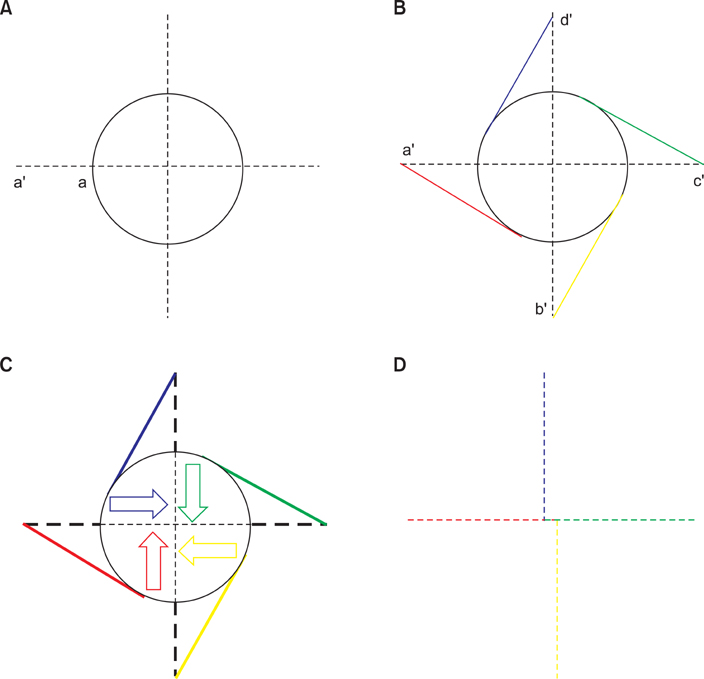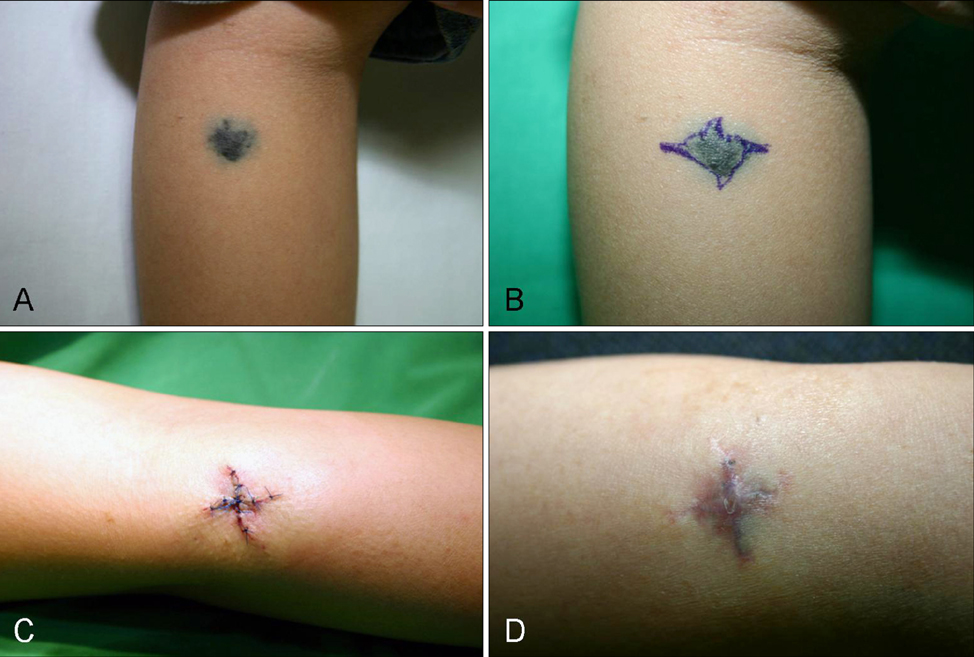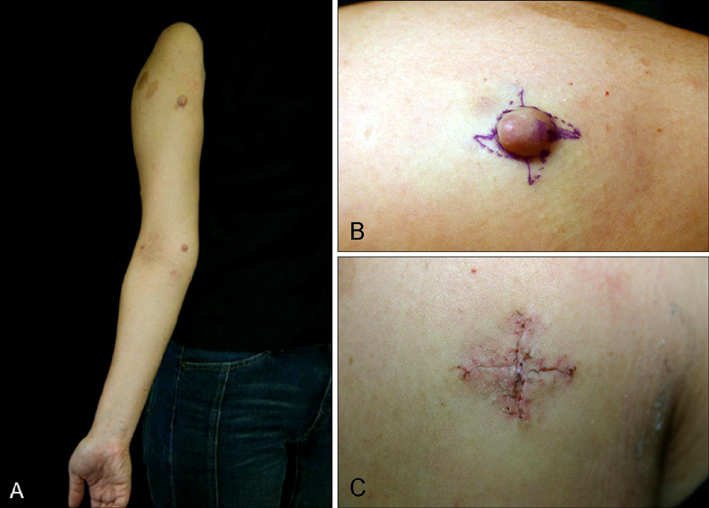Ann Dermatol.
2009 Feb;21(1):102-105. 10.5021/ad.2009.21.1.102.
Two Cases of Annular Skin Defects Repaired with Quadruple Fan Flaps (O-X Flap)
- Affiliations
-
- 1Department of Dermatology, School of Medicine, Ewha Womans University, Seoul, Korea.
- 2I Love Beauty Skin Clinic, Seoul, Korea.
- 3Serion Dermatologic & Aesthetic Surgery Center, Seoul, Korea. skinewkk@hotmail.com
- KMID: 2172081
- DOI: http://doi.org/10.5021/ad.2009.21.1.102
Abstract
- Nowadays, patients have high expectations when it comes to minimization of postoperative scarring after dermatologic surgical procedures. When an annular lesion is being excised, normal skin should be excised, as well, to prevent a dog ears resulting in a long scar. We introduce a new flap reducing the scar length in annular defects. In order to avoid a long scar, we designed a quadruple fan flap (O-X flap) that is a variation of the rotation flap. It consists of four rotation flaps arranged like fans, with open and closed configuration. We suggest that the quadruple fan flap (O-X flap) is a viable option for treating annular skin defects, because it shortens the scar line, preserves normal tissue, and provides a cosmetically favorable outcome.
Keyword
Figure
Reference
-
1. Stegman SJ, Tromovitch TA, Glogau RG. Ellipse. Basics of dermatologic surgery. 1983. Chicago: Year Book Medical Publishers;60–62.2. Leffell DJ, Brown MD. Basic excisional surgery. Manual of skin surgery: a practical guide to dermatologic procedures. 1997. New York: Wiley-Liss;149–154.3. Goldman GD. Rotation flaps. Dermatol Surg. 2005. 31:1006–1013.
Article4. Buckingham ED, Quinn FB, Calhoun KH. Optimal design of O-to-Z flaps for closure of facial skin defects. Arch Facial Plast Surg. 2003. 5:92–95.
Article5. Michaelidis IG, Stefanopoulos PK, Papadimitriou GA. The triple rotation scalp flap revisited: a case of reconstruction of cicatricial pressure alopecia. Int J Oral Maxillofac Surg. 2006. 35:1153–1155.
Article6. Weber PJ, Moody BR, Foster JA. Series spiral advancement flap: an alternative to the ellipse. Dermatol Surg. 2001. 27:64–66.
Article7. Paolo B, Stefania R, Massimiliano C, Stefano A, Andrea P, Giorgio L. Modified S-plasty: an alternative to the elliptical excision to reduce the length of suture. Dermatol Surg. 2003. 29:394–398.
Article
- Full Text Links
- Actions
-
Cited
- CITED
-
- Close
- Share
- Similar articles
-
- Reconstruction of the Soft Tissue Defect Using Thoracodorsal Artery Perforator Skin Flap
- Reconstruction of the Nose with Local Flaps
- Myocutaneous flaps in general surgery
- Island Falp in the Hand
- Six Cases of Reconstruction with Latissimus Dorsi Pedicled Flap for Head and Neck Defects in the Era of Free Flap Reconstruction




